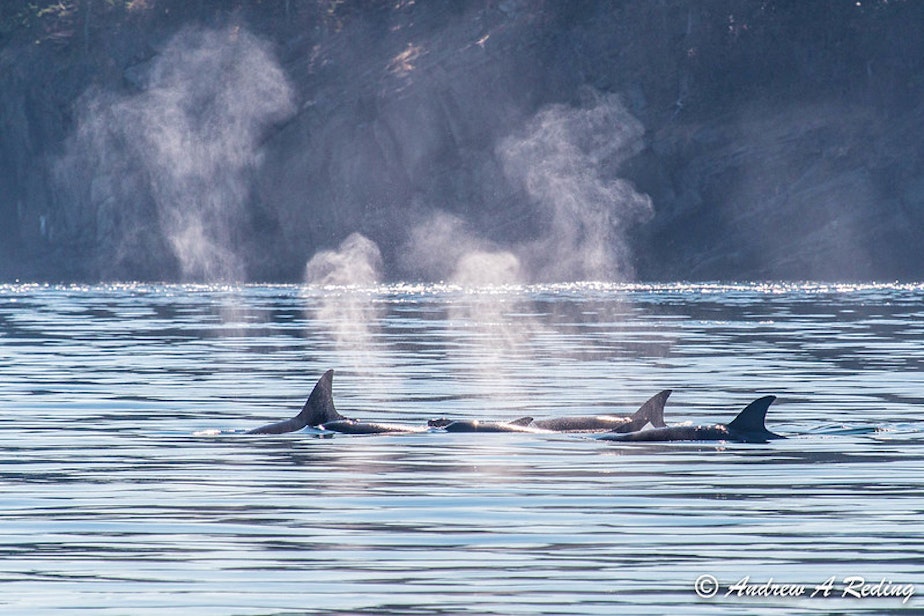Why are these killer whales increasingly showing up in the Salish Sea?

Traditionally, "resident" orcas have lived in the Salish Sea. They're the orcas we associate with the waters around Seattle. But another variety, "transient" orcas, have generally hung out along the West Coast, away from the interior territory of the locals — at least, that's the way it used to be. Transient orcas, aka Bigg's killer whales, appear to be sticking around the neighborhood more often.
"We know the rise of the Bigg's (orcas) is definitely a real phenomenon," said Monika Wieland Shields, director of the Orca Behavior Institute. "If we compare to eight years ago ... we’ve seen about an eight-fold increase in the number of sightings in the Salish Sea, so it’s been a dramatic rise.”
RELATED: It's getting quieter in Puget Sound and easier for orcas to find dinner
The Salish Sea stretches from Olympia at the south, up through the Strait of Juan de Fuca, and up into Canada along the eastern shore of Vancouver Island. Resident orcas are historically common in this region.
Shields notes that Bigg's killer whales are "thriving" and are now being sighted in the Salish Sea more often than they ever have. Over the past couple decades, the Bigg's killer whale population has grown by about 2-4% annually. Previously, observers may have expected to see these orcas showing up locally for a few days, but over the years, they've begun hanging around for weeks or months at a time.
Part of this phenomenon is due to the rise in social media and digital photos, which help organizations like the Orca Behavior Institute track whale sightings. They only track events, instead of every single person posting whale sightings online, including duplicates. But social media doesn't explain the entire story.
Resident and Bigg's orcas have different diets, and that also explains why transients love local water so much.
“The southern residents are struggling due to lack of abundant salmon that they feed on, and the transient Bigg’s killer whales are thriving because what they eat is abundant," Shields said. "They are going after harbor seals, sea lions, porpoises, and all of those populations have recovered dramatically in recent decades. So it’s no surprise that they are coming in to take advantage of what is an incredibly abundant food source for them (around Puget Sound)."
Bigg's killer whales can be divided up into two groups, Shields said — inner coastal and outer coastal. It's the inner population that has been showing up around the Salish Sea in recent years. There are an estimated 380 whales in this group, and about 250 are estimated to be hanging around our local waters each year.
Fun fact: Orcas have traditionally been called "resident" or "transient" to differentiate the populations that live among interior waters, like Puget Sound, and those who live off the West Coast. But in recent years, more and more transients have been hanging around interior waters. So whale researchers decided to introduce a new name to identify this group — "Bigg's," after Michael Bigg, a whale researcher known for developing methods to photograph, identify, and track whales over time.





